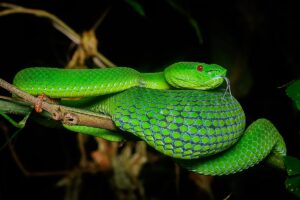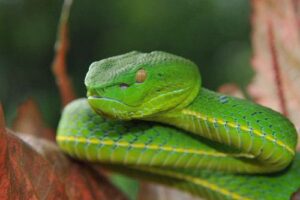What do rough green snakes eat? Understanding the dietary habits of these slender, arboreal reptiles is crucial for their care and maintenance in captivity. In their natural habitat, rough green snakes have a specific diet that ensures their survival.
Rough green snakes primarily feed on insects, such as crickets, grasshoppers, moths, and other small invertebrates. They are known to be insectivores, meaning insects make up the bulk of their diet. In captivity, they can also be fed appropriately sized insects such as crickets, mealworms, and fruit flies. However, in the wild, their diet is largely dependent on the availability of insects in their habitat.
Importance of understanding rough green snakes diet

Understanding the diet of rough green snakes (Opheodrys aestivus) is crucial for several reasons:
- Nutritional Needs: Knowing what rough green snakes eat helps ensure they receive a balanced diet in captivity. These snakes primarily feed on insects such as crickets, grasshoppers, and caterpillars. Understanding their dietary preferences and nutritional requirements helps maintain their health and vitality.
- Feeding Behavior: Understanding the diet provides insights into the feeding behavior of rough green snakes. This includes how they hunt, capture, and consume prey. Observing their natural feeding behavior can aid in providing appropriate feeding stimuli in captivity.
- Reproduction and Growth: Diet can significantly impact the reproductive success and growth rates of rough green snakes. A varied and nutritionally balanced diet is essential for breeding females to produce healthy offspring and for juveniles to grow properly.
- Ecological Role: Knowing what rough green snakes eat contributes to understanding their ecological role in their natural habitat. As insectivores, they help control insect populations, which can have cascading effects on ecosystems.
- Conservation: Understanding the dietary habits of rough green snakes is crucial for conservation efforts. Changes in prey availability or habitat alteration can impact their survival. By understanding their diet, conservationists can better assess threats and develop strategies for their protection.
- Health Monitoring: Monitoring the diet of captive rough green snakes can also serve as an indicator of their health. Changes in feeding behavior or refusal to eat certain prey items could signal underlying health issues that need attention.
Understanding the diet of rough green snakes is essential for their captive care, conservation, and overall well-being. It provides insights into their natural behavior, nutritional needs, and ecological role within their habitat.



